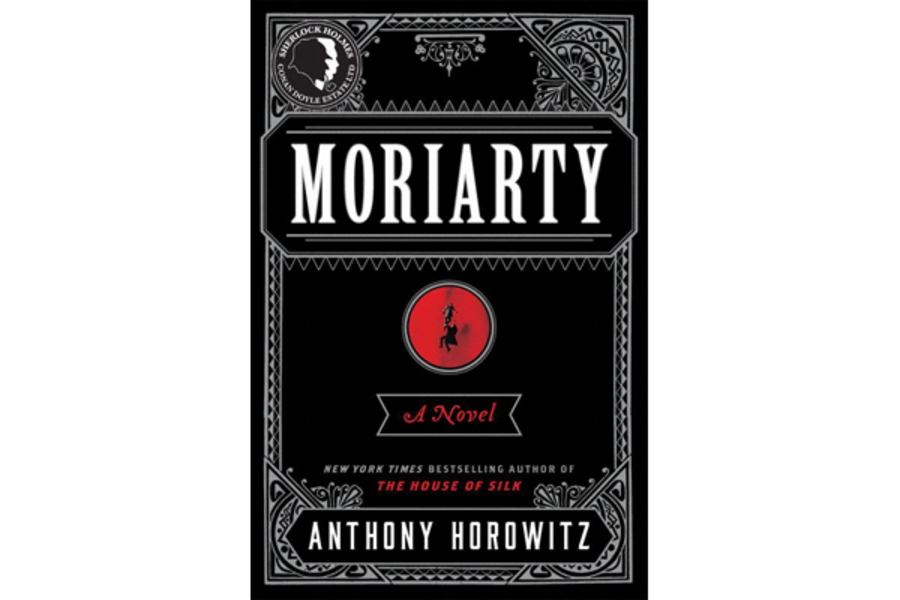'Moriarty' is a Sherlock Holmes tale with no Holmes in sight
Loading...
When Sir Arthur Conan Doyle sent Sherlock Holmes plunging over Reichenbach Falls, he was thoroughly sick of the character that had made him famous. The last thing he intended was to give his consulting detective an escape route. Hence, Holmes’s subsequent resurrection in “The Empty House” may have struck some close readers of the text as a little, um, narratively problematic, as a result.
“Does anyone really believe what happened at Reichenbach Falls?” Frederick Chase, the narrator of Anthony Horowitz’s new Moriarty, asks in the novel’s opening sentence, before pointing out a few of the larger plot holes.
For one thing, what possessed Holmes to flee London, which was his home turf and was peppered with boltholes where he could have gone to ground? “Holmes’ disguises were so brilliant that he could have spent the next three years as a Catholic priest without anyone being the wiser,” Chase, a Pinkerton detective deployed to London, points out.
And if Moriarty was such a criminal mastermind, why on earth didn’t he bring a weapon to the showdown? Speaking of weapons, Moriarty’s No. 2, Colonel Sebastian Moran, was on hand at the falls: “[W]hy didn’t he try to help? Where is his gun? Has the greatest marksman in the world accidentally left it on the train?”
The creators of the BBC’s “Sherlock” had a great deal of fun speculating about Holmes’s escape from death in 2014’s “The Empty Hearse.” Fun, unfortunately, is one of the things missing from “Moriarty.” Two others are Holmes and Watson.
That said, coming up with a new Sherlock Holmes story is not an enviable task: The character remains so popular that he’s solving crimes in not one, but two current TV series. (Elizabeth Bennet got her petticoats muddied in a crime-solving miniseries in 2013, and Jayne Eyre now sends texts, but Holmes appears to have a particularly strong grip on the public’s imagination.) Horowitz, the only author authorized by the Conan Doyle to produce sequels, has his work cut out for him. And he’s operating without Benedict Cumberbatch, which must be seen as a handicap.
The creator of “Foyle’s War,” “Midsomer Murders,” and the "Alex Rider" series has a long and acclaimed history with the mystery genre and his first authorized sequel, “House of Silk,” won over both critics and fans. In that novel, Watson was writing up a tale that would have shocked Victorian society right out of its boots, with orders that it not be published until 100 years after his death. With “Moriarty,” Horowitz tries something more challenging: a Holmes tale with no Holmes in sight.
Instead, Chase and Scotland Yard detective inspector Athelney Jones try to fill the void. The two meet over the body of the man who gives the novel its title.
“I was at Reichenbach five days after the confrontation that the world has come to know as ‘The Final Problem.’ Well, there was nothing final about it, as we now know, and I guess that just leaves us with the problem,” Chase writes.
Crime abhors a vacuum and, with Moriarty having been plucked from his web and most of his confederates rounded up by Scotland Yard, an American crime boss has taken over London. Clarence Devereux’s methods lack elegance – he rules by violence and terror rather than mathematical precision. He’s also never had his picture taken, meaning that Jones and Chase have to track him through his lieutenants.
Like “House of Silk,” “Moriarty” is far gorier than anything Conan Doyle penned, with Jones and Chase investigating a houseful of people killed in brutal fashion.
Jones, a minor character in “The Sign of Four,” did not fare well in his first encounter with the great detective. Since then, he’s become obsessed. He knows Holmes’s methods, and he appears to employ them with more success than faithful Watson. Chase, meanwhile, is happy to fill the role of scribe and sidekick. Other characters also make cameos, such as one from the story “The Red-Headed League.”
Horowitz is an excellent plotter, and despite going in expecting narrative traps and literary double-crosses, he absolutely got me. “Moriarity” doesn’t lack for deductive reasoning or a solid mystery.
But while the novel is clever, it’s a cold-blooded cleverness. And it’s unlikely to satisfy fans of the world’s only consulting detective. Without Holmes or Watson, the game not only isn’t afoot, it never fully gets off the ground.








